×
[PR]上記の広告は3ヶ月以上新規記事投稿のないブログに表示されています。新しい記事を書く事で広告が消えます。
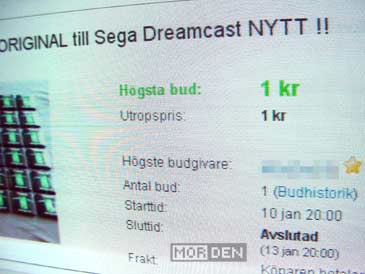
I have scored some nice deals in my life, but this one is certainly among the sweetest. While browsing through a local auction service a while back, I've noticed one seller who was basically giving away tons of hardware and software. I looked through his list and diceded to go with Dreamcast peripherals.

The guy had some positive feedback so I figured "why not?". I bid 1 [yes, ONE] Swedish krona [that's 0,11 US Dollars] on a set of 48 US Dreamcast memory cards and wouldn't you know it, I've won. The guy really took his time before I got the goods but today I picked up a 5.8 kilogram box full of Visual Memory Units.
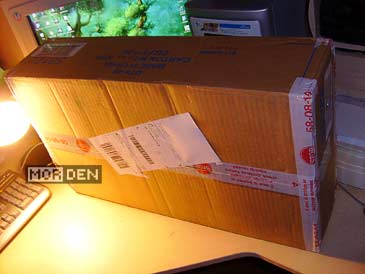
I knew the seller wouldn't try to screw me out of money since he sent me an invoice, so I wired the money after I've opened the box. After all, aside from the 0,11 dollars for the cards, I had to pay 27 dollars for the shipping. With a deal like this it's kind of hard to believe that everything is ok. I thought that maybe they were cheap knocko-ffs or maybe they were damaged. Everything was ok though. Memory cards are original US Sega hardware, all in skeleton green cases.
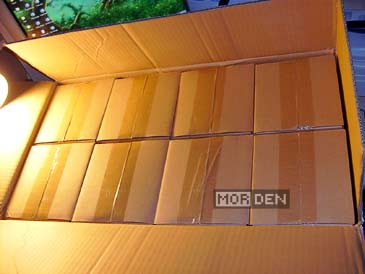
The package contained eight boxes, six cards in each one of them. All packed by the manufacturer, brand new, never before opened. Having 48 VMUs, now I can rest assured that I will never run out of memory. And if I do, I can always use the Dream Explorer tool on each and every one of the cards to release those 41 unused blocks.
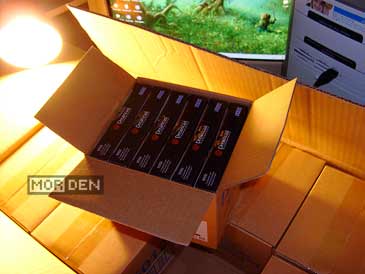
All the excitement aside, I have to say one thing. Sega really had it going on with Dreamcast. The console rocked. It was ahead of its time, it was the first 128-bit system, it was the first home platform to make proper use of the internet [not counting Saturn NetLink and Genesis X-Band modems], it used custom discs, double the size of CDs and it got the VMU, probably the most innovative memory device seen to this day.
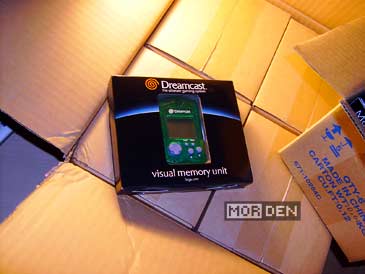
For those who aren't really sure what Dreamcast VMU really is, it's a memory card. But it doesn't end here. Except for being a portable storage device, you can play games on it. Simple as they might be, they're still games. There were many Dreamcast titles that used VMUs extensively, Sonic Adventure being a particularly good example.
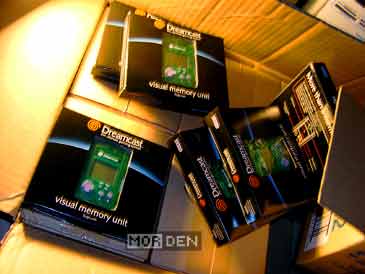
In Sonic Adventure you could catch a Chao creature and transfer it onto your VMU. From there you could train it, feed it and so on, much like a Tamagotchi. It grew stronger and faster and you could later transfer it back into the game and participate in races, etc. Sounds like fun, right? It sure was.

The VMU also served as a status display in many Dreamcast games. When plugged into the controller, it would show various things depending on a game. Some would display a static logo, some would show animation, but there were also those games that would show you useful information, like Resident Evil: Code Veronica. The game would show you your health in a form of the standard EKG readout.
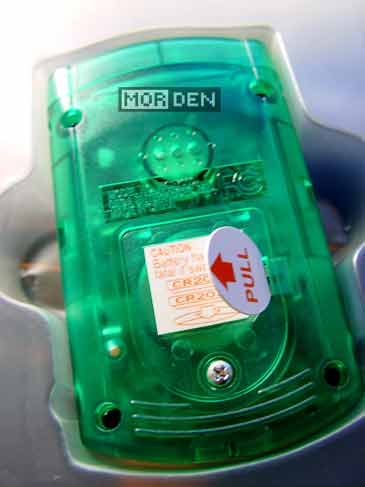
Another cool feature was the ability to connect two VMU units with each other. The connector was designed so that two memory cards could be connected with each other directly. By doing this, you could swap save files with someone or even play a two player game.
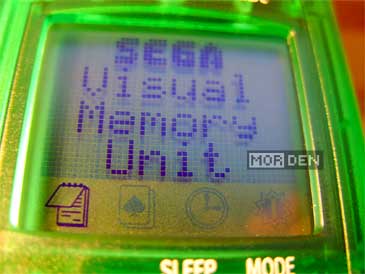
It seems like the idea of mini game devices serving as memory cards was appealing enough for Sony, so a year after Sega they released their own hardware, calling it PocketStation. We all knew it was a VMU ripoff though and it enjoyed an even shorter life than Dreamcast. Ok, that's enough for today. I'm off to do some heavy saving and I'll be back to post about Quaker Wars.
PR
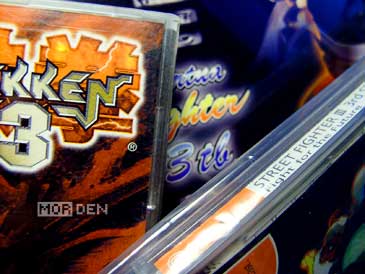
The years 1996 and '97 sure bring back some memories, particularly arcade related ones. The console revolution was in full swing and everyone could finally experience the gameplay quality that up until now was exclusive to the arcades. Just when I thought things couldn't get eny better, Sega unleashed their Model 3 arcade hardware. September of '96 marks the date when everything changed and the future arrived. To see one million polygons in motion, forged into a fighting game by the AM2 team led by Yu Suzuki was an experience unmatched to this date. Virtua Fighter 3 became a benchmark and other games would be measured by its greatness for many years to come.
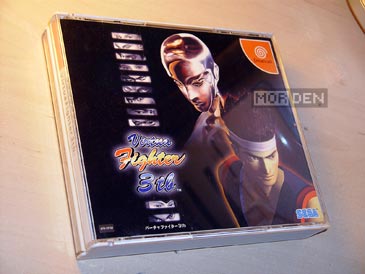
Virtua Fighter 3 was faster, better and more complex than any other fighting game seen before. It was a marvel both in terms of graphics and gameplay depth. Terrain variations on full 3D arenas plus the evade button made this title into the very first fully three dimensional fighting game ever made. In 1997 Sega released an updated version of their smash hit and added the team mode, thus the name "Team Battle".
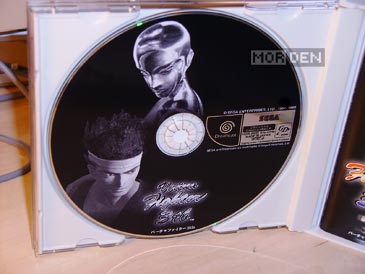
Before I go any further into writing this entry, let me explain the first photo, which might seem a bit out of place for some. 1997 was the year when Virtua Fighter 3: Team Battle arrived, but it was also the year when Capcom released their CPS-III hardware along with Street Fighter III: New Generation. Namco followed shortly after and released Tekken 3 on their new System 12 hardware. Each one of these games was groundbreaking in their own ways and I will never forget the years when this trio ruled the arcades all over the world. Let's get back on the subject of Virtua Fighter 3 though.
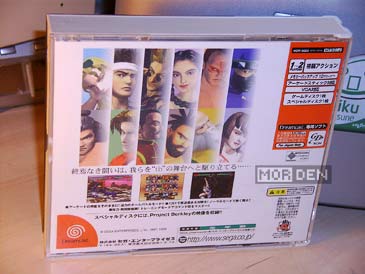
Nowdays, whenever an important title premieres at the arcades, it's usually ported to one of the home platforms pretty quickly. Back in '96 there was no console on the market that could be match for Sega's Model 3. Virtua Fighter 3 had to wait for a suiting hardware to appear and so, after over two years from the arcade release, it finally got ported to Dreamcast and this is where things went wrong. Swamped with Dreamcast projects, Sega themselves didn't have the time to handle the console port of their flag title, so instead the game was ported by Genki.
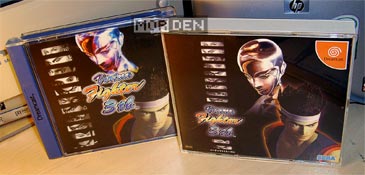
Even though Sega's then upcoming platform had more than enough power to ensure an arcade perfect conversion, the development process was rushed to meet the Dreamcast launch date amd the conversion suffered greatly. The number of polygons was lowered which was clearly noticable, especially in the clothing which lacked the same amount of detail the arcade version had. Despite that, Virtua Fighter 3 managed to become one of the best selling titles on the Dreamcast and is still a great game which includes unique features that are yet to return to the series.
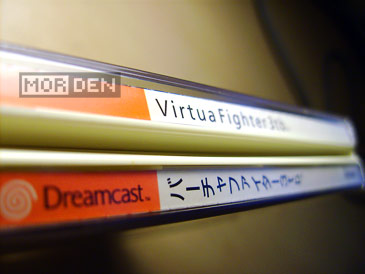
My Virtua Fighter 3 story doesn't end yet, so don't go anywhere. We all know Shenmue, the overly-ambitious Yu Suzuki project that never saw an end. Before it ever came out, it was codenamed Project Berkley and those who bought the first edition [Numbered HDR-0002. Edition numbered HDR-0017 is a second run and comes in a standard jewel case, unlike the first edition, which comes in a double.] of Virtua Fighter 3 for Dreamcast could take a sneak peek at the game. The Project Berkley GD-ROM disc found in the VF3 game case contains a 30 minute long interview with Yu Suzuki, who first talks about each and every one of his earlier projects and explains what he was trying to acomplish with them. Later he talks about Shenmue and his thoughts on the RPG genre. Suzuki San thought it would only be appropriate to create a whole new genre for his mastodont of a project and so FREE [Full Reactive Eyes Entertainment] genre was born.
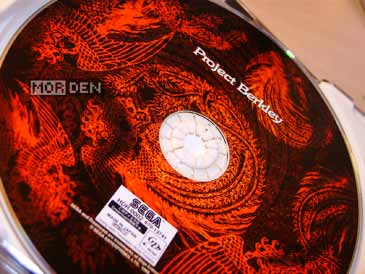
Throughout the whole interview, Yu Suzuki is rather vague when it comes to Shenmue details. He talks quite a bit about his understanding of a creative process. The player should not be constrained by too many boundries and progression in the game should be seen as a free choice, but a choice that a player wants to make. This is all pretty interesting and it shows how Suzuki evolved as a game designer. Not many have the same opportunity to make games as they see them, without anyone else breathing down their necks.

Even before the Suzuki talk starts, we get to see some Shenmue footage from a very early developement stage, including a handfull of scenes never seen in the game. In the later part of the video we also get a glimpse of character concept sketches and here we'll see many characters we already know [or rather those who have played Shenmue games know] but also many that were yet to appear. All in all, Project Berkley is packed with interesting material and this disc alone is a good enough reason to justify a purchase of first edition of the Virtua Fighter 3 Team Battle for the Dreamcast.
If you by any chance see a Virtua Fighter 3 cabinet, don't forget to show this marvelous machine some love. This brilliant piece of hardware and software was lightyears ahead of the competition when it first appeared and it still plays great even today. It's time to finish this entry, but before you leave, click on the thumbnail above and watch some footage from a beta version of the game to see a couple of outfits that didn't make it in the final release. While watching, notice the music, especially on Pai's rooftop stage. It sounds different [and worse] on Dreamcast. Yep, that's another one of Genki's gifts to us, people who wanted a 1:1 arcade conversion.
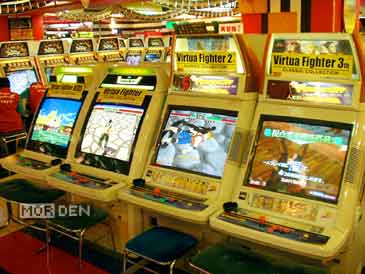
Lastly, one more picture and a rare sight indeed. Virtua Fighter, Virtua Fighter 2, Virtua Fighter 3 and Virtua Fighter Kids side by side in one of Akiba's arcades. This picture was taken during the peak of Virtua Fighter 4's popularity and at least a dozen of Virtua Fighter 4 machines can be seen in the background along with arcade staff members wearing VF4 jackets.
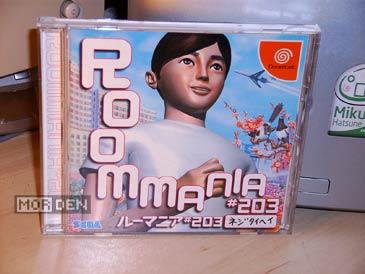
There has been some weird games for the Dreamcast throughout the years and Roommania #203 is definitely one of them. It seems that "weird" is what Japanese developers do really, really well. The concept behind Roommania #203 is intriguing and it really works but I'll get to that in a bit. First let me explain a couple of things.

On multiple ocasions I have heard people say that Roommania #203 is a rare game, a collectable even. This always came as a surprise to me, because this title is pretty common, and one day it finally dawned on me. Many think of this game as a rarity because it never got a proper bootleg release. Roommania #203, not unlike D2, could not be ripped and fit onto a regular CD. It took some time before a working release appeared and even then it could only fit onto a 90 minute CD. Talk about rare.

Now, about the game. Roommania #203 was developed by WaveMaster [formerly known as Sega Digital Media], one of Sega's R&D teams who have previously worked on Panzer Dragoon and Jet Set Radio, among others, focusing on game music. This time they give us a completly original stalker-god game in which we will take the role of an invisible being on a quest to straighten out a student named Neji.
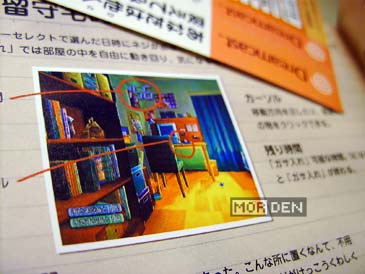
The game mechanics are quite simple. Our task is to send Neji subliminal suggestions by pointing at various objects in his apartment and throwing ping pong balls at them. We throw a blue ball at something and when it bounces back yellow, we know that Neji can be persuaded to pick it up and use it. If the ball bounces back grey, Neji won't react at all. We can make him drink water, sit at his computer [running KorisuOS - Korisu translates to "baby squirrel"] and chat, watch tv, listen to his favorite music [he really likes Serani Poji, a pop singer he has a poster of - WaveMaster actually produced a couple of Serani Poji albums which they released under their own record label.], watch TV and so on. To make Neji feel the urge for using something, you'll need to throw ping pong balls at it repeatedly.

The game interface is pretty simple. You observe Neji in his apartment using one of several views. They work like surveillance cameras. They're fixed in one position but you can pan in all directions and zoom in on objects if needed. In the lower left corner of the screen you see a list of things Neji is about to do. If you do nothing, he'll go about his business, but let's say "watching TV" is on the fifth place on the list, you can move it up by throwing the ping pongs at the TV or the TV remote. You can of course make Neji do things that are not on the list, it just takes more persuading and of course more ping pong balls.
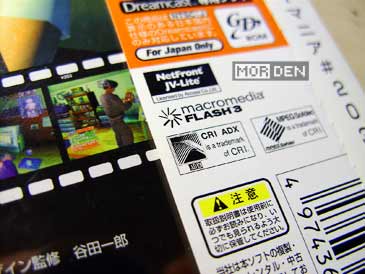
Roommania #203 might seem like a dull game but it's not. The real fun begins when you're done with a load of training missions where all you have to do is make Neji do simple tasks, like set his alarm clock. Already during the training missions there are days when you get to roam around Neji's apartment freely. You have alot more freedom when he's not around and you can choose to do things you wouldn't or couldn't normally do, like moving his furniture or hiding things from him. Move his table or leave the TV on, and you'll see a priceless look on Nejis face once he comes back home. You can even lock him out of his own apartment. This will make Neji break into his own place by climbing the balcony.
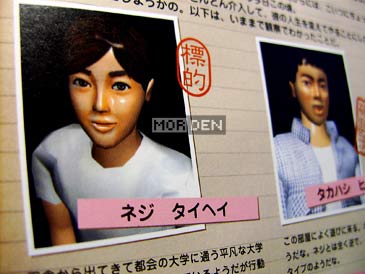
At all times you can monitor Neji's movement by looking at a white doll in the upper right corner of the screen called Chibi Neji, so even when you're in the kitchen, busy throwing ping pong balls at the sink, you'll be able to see if Neji is sitting down or walking around and since the whole game takes place in his one room apartment, you can easily figure out what he's up to just by looking at Chibi Neji.
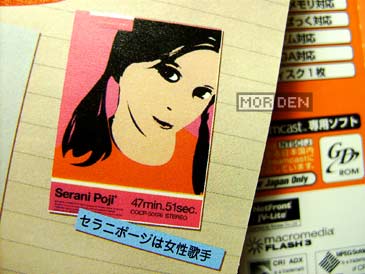
The story in the game takes off later on when you're done with tutorial missions. From that point on there's alot more going on. Neji has friends over and we get to eavesdrop on their conversations, there's some drama when a burglar breaks into Neji's place and so on. Sometimes all you have to do is to watch Neji brush his teeth or smoke, but sometimes things will get more hectic and your objectives turn from making Neji listen to the radio to locking the door so that the cops can't get in and bust the poor guy.
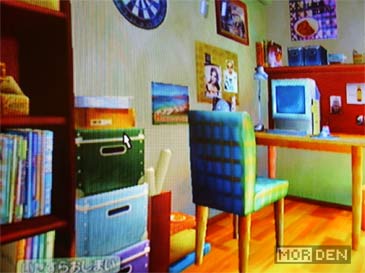
The game is packed with Japanese humor and what's the most annoying thing about Japanese humor? It's Japanese and you have to speak the language to get it. The game is funny in general and you can see that developers really had a good time making this. Sometimes you'll hear Neji fart and comment on it, which is funny in itself since the guy lives alone. Further proof of the game being an extremely light hearted production is the warning that's played when you pop a GD disc into a CD player. Normally you'd hear a female voice instructing you to stop the disc since it's a game and it's supposed to be used with Dreamcast only. The message played on Roommania #203 starts off like the usual one but then Neji cuts in and starts asking questions about why he can't play it like a regular CD. You can just tell he's one clueless dude and it's funny as hell.
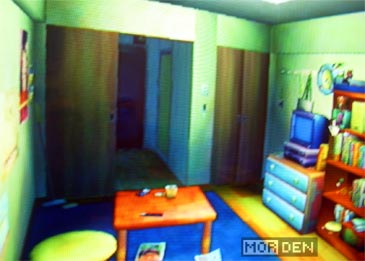
What of the graphics and the sound in the game? The game looks great, even though all you'll see is Nejis small apartment. There's something about how Roommania #203 looks that makes it instantly recognisable as a Dreamcast title. Maybe it's the texturing that bares some similarities to how Shenmue looked, maybe it's something else, but it's there. The sound is great aswell. If you ever play this game, I suggest you use headphones. Thanks to nice 3D sound dynamics you really feel like a fly on Neji's wall [or a ghost in Neji's wall].

To get a better picture of how the game looks and plays, check out the video below. It comes from the PlayStation 2 version of the title that came out two years later, but it's essentially the same game plus some fun minigames. Neji speaks with a neighbour kid through a hole in the wall. Just imagine what could have made such a hole and you'll realize that there's plenty of action in Roommania #203.
There's really so much more I'd like to say about this title but this entry already looks like one of the longest I've done so far, and I don't want to bore you to death. If you like what I said and you think that Roommania #203 could be something you'd enjoy, import it. It doesn't get too expensive and it's worth every penny. You can also look for the PlayStation 2 version I mentioned earlier, aswell as a sequel that was released for Sony's platform in 2003. If you have any questions about the game you can always post a comment and I'll answer you if I can. Don't come to me for a game FAQ though. The game is relatively simple and I'm sure anyone can figure it out even without any knowledge of Japanese, allthough you'll be missing out on a ton of jokes.

Finally, new games arrive. I was starting to think that maybe people at the post office accidently crushed the package with their iron hands and just threw it away, pretending they never recieved anything to deliver to me in the first place. Fortunately the package arrived in one piece.
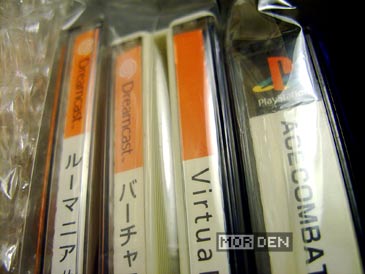
So what's hiding in the envelope under a thick layer of bubble wrap cushioning? It's the new arrivals! The titles this time around are Roommania #203 [ルーマニア#203], Virtua Fighter 3 TB [バーチャファイター3tb] and Ace Combat 3: Electrosphere [エースコンバット3 エレクトロスフィア]. It's been a while since I bought anything for the DreamCast and it's been even longer since I got something for the PlayStation.
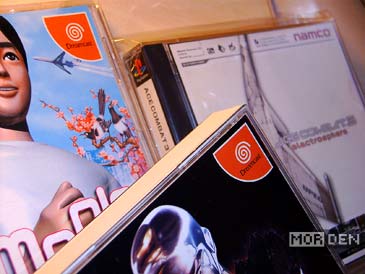
I have alot to say about each and every one of these titles, so I'll save the game talk for later. I'll try to make a separate entry for each game, since they all deserve equal attention. There's always plenty to say about Japanese editions and they do differ from European and American releases greatly, so stay tuned. In the meantime let's talk movies.
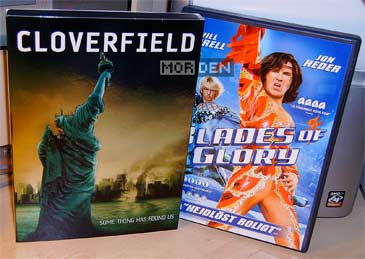
I mentioned obtaining Cloverfield and since then I got around to watching it. What did I think? That's one movie without a proper ending. It's not even a surprise "I didn't expect that" or "who knows what's next" kind of ending. It's the kind of ending you make when your budget runs out. I won't spoil anything for you and if you want to watch it, go ahead and knock yourself out. Let me tell you one thing though - if the movie wasn't as cheap as it was, I would probably be cursing up a storm.
Besides Cloverfield I also got Blades of Glory and Death at a Funeral, first being another crazy Will Farell comedy and second ... well, I can't really tell you much about it since I haven't watched it yet. I did watch Blades of Glory and while it wasn't as funny as Dodgeball or even Zoolander, it made me laugh a few times and it helped me get over Cloverfield being an overhyped waste of time. If you think men in tight outfits and uncomfortable situations associated with this fact are funny, watch Blades of Glory.
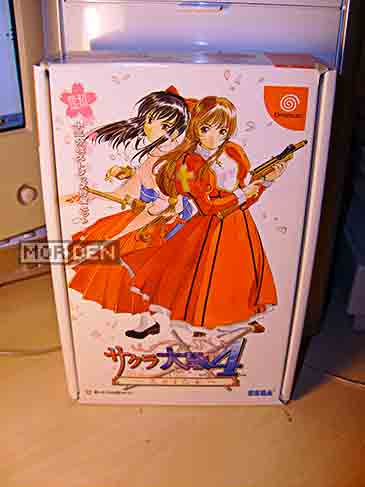
I actually got this around Christmas this year, along with some other DreamCast and WonderSwan titles, but didn't bother to post any pictures or info. Since I've got nothing better to do, let's fix this.
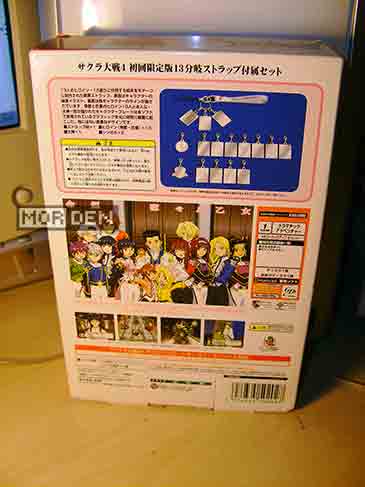
What you see on the photos is the limited edition of Sakura Taisen 4: Koi Seyo Otome for the DreamCast. For those who don't know, Sakura Taisen series is a mix between tactical turn based battle RPG and a dating simulator. A weird blend one might think, but it actually works, and works quite well.
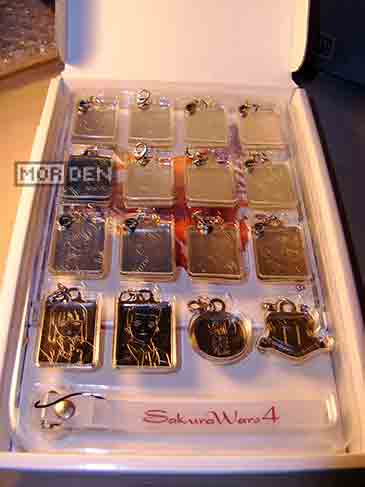
The series never officially left Japan, so if you're interested in playing any of Sakura Taisen games think twice, because it's not one of these games where you can just click your way through. I guess you can find some script translations on the internet, but what's the fun in that? Besides, the charm of the game completly dissapears.
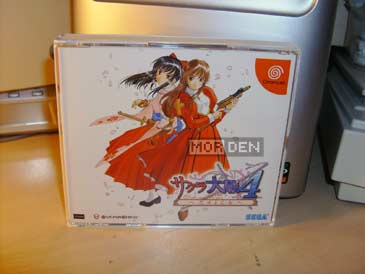
Before you get too excited about the nice box and what it contains, I've got to warn you. Sakura Taisen 4 is meant to be played by those, who have played at least one of the previous installment in the series [preferably first or third]. The game does a lousy job of introducing you to the world of Sakura and you might find the game a bit uninspired just because of that.
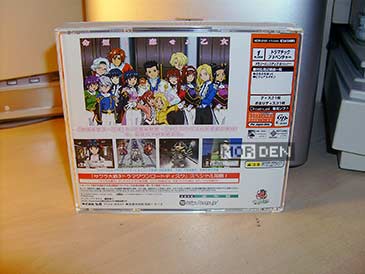
Now, what's so special about the limited edition? The box contains not only the game, but also a set of sixteen metal plates nicely engraved on both sides, and a mobile phone strap with Sakura Wars 4 print on it.
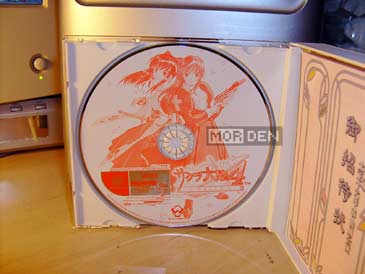
Except for the above mentioned collectables, hidden in the game case is a Sakura Taisen 3 bonus omake drama CD, or rather GD-Rom. To go through all of its features you'll need to have a Sakura Taisen 3: Pari wa Moeteiru ka, the previous DreamCast title savegame on your memory card.
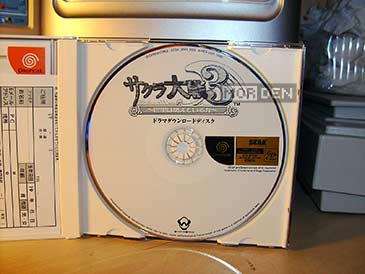
As for the game itself, it's a fairly decent title, but ... sadly, it doesn't follow any of the interesting and unresolved aspects of the character stories from the previous game and there's very little content that you could call new.

It kind of feels like the game made the same amount of progress as Street Fighter II from the basic version to the turbo. There are some tweaks, some updates, but for the most part, both the visuals and the sound will be pretty familiar to those who played Sakura Taisen 3. Sure, it's a new game, but it's a straightforward sequel. No fireworks.

Is the game worth picking up? That depends. If you're a DreamCast game collector, you will pick it up if only for the value of the limited edition. If you're a Sakura Taisen fan, you will pick it up because you like the series. In any other case, I'd say pass. Invest in one of the previous titles first and see how you like it.
カレンダー
| 11 | 2025/12 | 01 |
| S | M | T | W | T | F | S |
|---|---|---|---|---|---|---|
| 1 | 2 | 3 | 4 | 5 | 6 | |
| 7 | 8 | 9 | 10 | 11 | 12 | 13 |
| 14 | 15 | 16 | 17 | 18 | 19 | 20 |
| 21 | 22 | 23 | 24 | 25 | 26 | 27 |
| 28 | 29 | 30 | 31 |
カテゴリー
フリーエリア
最新CM
[02/23 jikoo]
[02/23 jikoo]
[02/21 sara]
[01/04 Inlagd]
[11/21 Inlagd]
最新記事
(01/31)
(01/27)
(01/04)
(11/14)
(11/12)
最新TB
プロフィール
HN:
No Name Ninja
性別:
非公開
ブログ内検索
最古記事
(12/17)
(12/19)
(12/23)
(12/25)
(03/30)
P R


